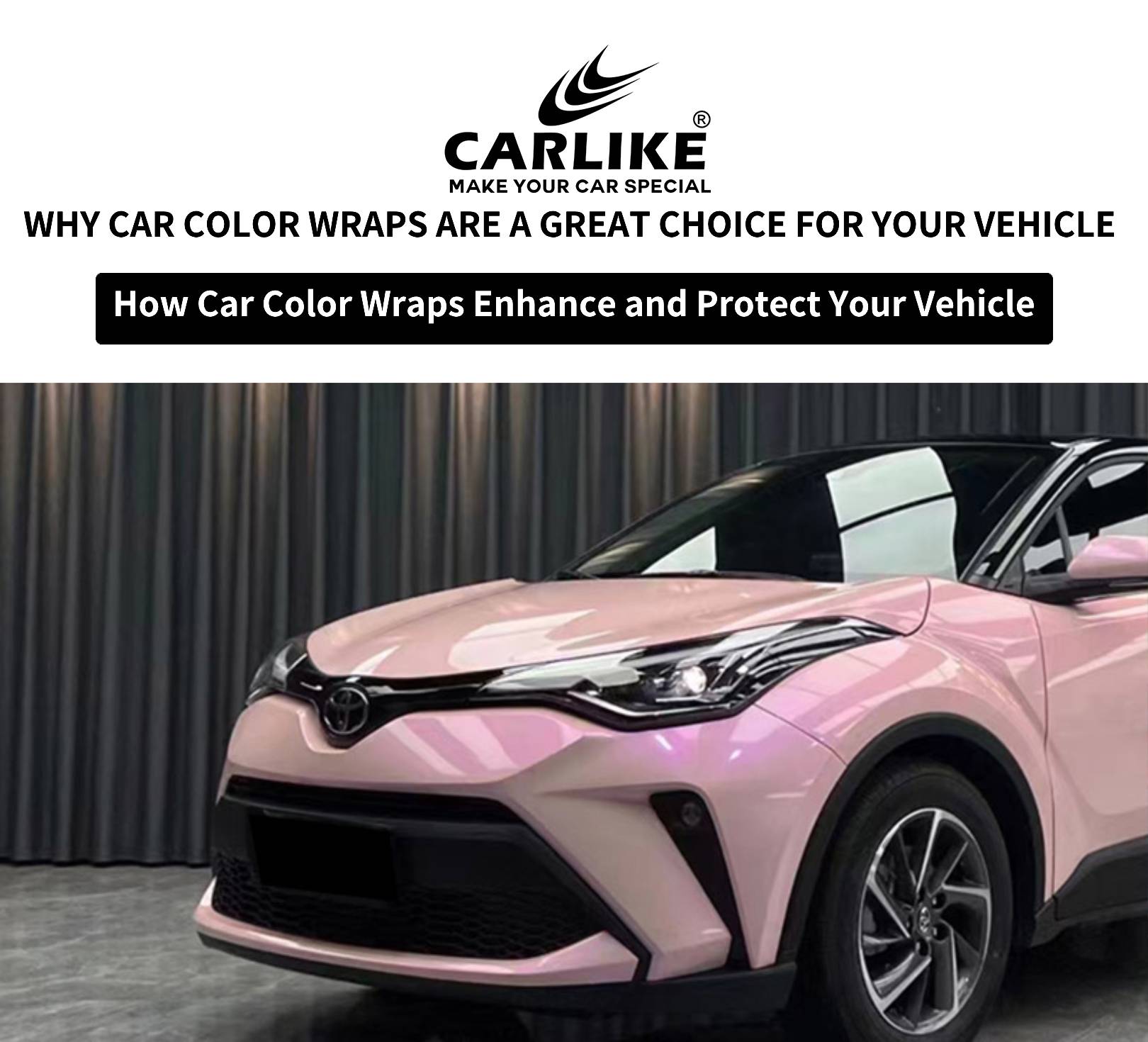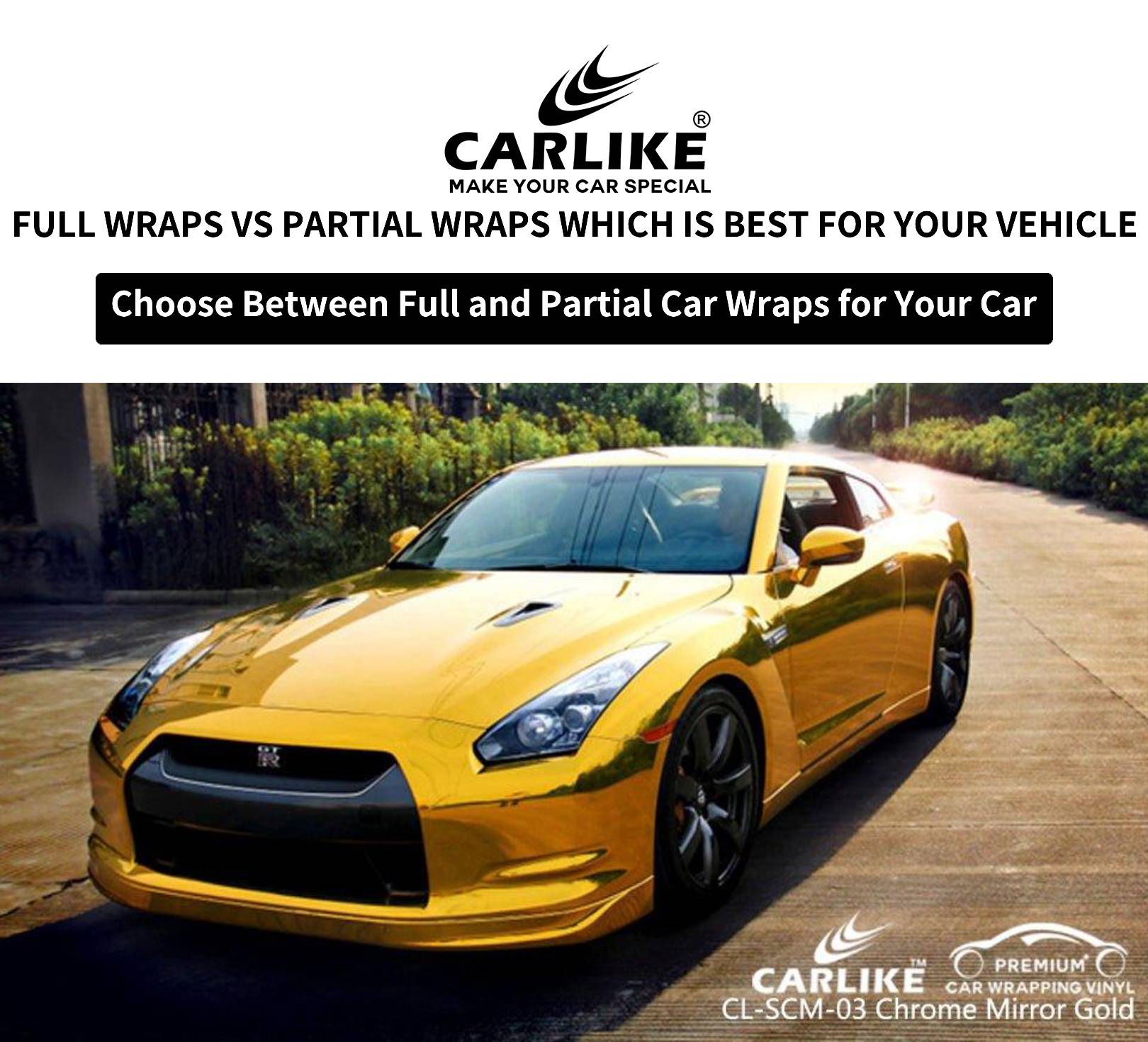Introduction of car wrap
Overview of the Popularity and Significance of Car Wrapping
Car wrapping has gained immense popularity in recent years, transforming the automotive customization landscape. This trend allows vehicle owners to change their car's appearance without the permanence of a paint job. Wrapping provides a vast array of colors, textures, and finishes, making it easier to express personal style or promote businesses through vehicle advertising.
The significance of car wrapping lies in its versatility and protective qualities. Not only does it enhance the aesthetic appeal of a vehicle, but it also acts as a shield against minor scratches, UV rays, and other environmental factors that can damage the original paint. This dual functionality has made car wraps a preferred choice for both personal and commercial vehicles, contributing to their growing demand in the automotive industry.
Importance of Avoiding Common Mistakes
Avoiding common mistakes in the car wrapping process is crucial for several reasons:
Cost Efficiency : Errors during installation can lead to costly re-dos or premature wear of the wrap. Ensuring proper application techniques can save money in the long run.
Durability and Lifespan : A poorly applied wrap is prone to bubbling, peeling, or fading. Understanding the correct installation procedures enhances the durability of the wrap, allowing it to last longer and maintain its appearance.
Aesthetic Appeal : Mistakes in alignment or application can result in an unattractive finish, detracting from the vehicle's overall look. Taking time to avoid these issues ensures a professional and polished appearance.
Resale Value : A well-maintained wrap can positively impact a vehicle's resale value. Conversely, visible mistakes can lead to a negative perception of the vehicle's condition.
Brand Representation : For businesses using vehicle wraps for advertising, any mistakes can misrepresent the brand and impact customer perception. A flawless wrap is essential for effective branding.
💡 ABOUT CARLIKE
CARLIKE® launched in 2012, mainly focus on premium car wrapping vinyls, with rich colors and stylish designs. High performance with economic price is always the persuit of CARLIKE®.
CARLIKE-Make Your Car Special.
Mistake #1: Inadequate Preparation
Importance of Cleaning and Drying the Vehicle’s Surface and Checking for Imperfections or Scratches
Proper preparation is essential for achieving a flawless car wrap, and this begins with cleaning and drying the vehicle’s surface. A clean surface ensures that the vinyl adheres correctly, preventing issues such as bubbling, peeling, or lifting over time. Any dirt, grease, or contaminants left on the surface can create barriers that compromise the adhesive quality of the wrap.
Equally important is checking for imperfections or scratches on the vehicle's surface. Even minor flaws can become more pronounced once the wrap is applied, affecting the overall appearance of the vehicle. Identifying and addressing these imperfections before installation can prevent costly repairs and enhance the longevity of the wrap. Additionally, a smooth, well-prepared surface contributes to a more professional finish, ensuring that the wrap looks stunning and maintains its aesthetic appeal.
In summary, thorough cleaning, drying, and inspection of the vehicle’s surface are foundational steps in the wrapping process that contribute significantly to the success of the installation and the wrap’s longevity.

😍PRODUCT ADVANTAGE
1. SUPER STRETCH
CARLIKE® vinyl is made by high polymeric pvc film.The film with very high stretch, easily for the curves and full car body wrap.
2. INCREDIBLE RESTORABLE
When you use the film, if the film wrinkled, heating membrane can be restored.
3. REMOVABLE GLUE
Solvent-based acrylic low viscosity glue, Professional honeycomb air channels, After remove non residual glue, Do not damage the original paint.
Mistake #2: Choosing Low-Quality Materials
Risks Associated with Low-Quality Materials
Durability Issues : Low-quality wraps are prone to tearing, fading, and peeling. They may not withstand environmental factors like UV rays, moisture, or temperature changes, leading to a shorter lifespan.
Poor Adhesion : Inferior materials may not adhere properly to the vehicle's surface, resulting in bubbles, wrinkles, or a compromised finish. This can affect the overall aesthetics and lead to the need for premature replacement.
Color Fading : Cheap vinyl films often lack UV protection, causing colors to fade over time. This not only diminishes the visual appeal but can also reduce resale value.
Difficult Removal : Low-quality wraps can become difficult to remove, leaving adhesive residue or even damaging the paint underneath. This can lead to additional costs for professional removal and repainting.
Safety Concerns : In some cases, low-quality wraps can obstruct visibility or interfere with vehicle lights, creating potential safety hazards.
Tips on Selecting High-Quality Car Wrap Films
Check Material Composition : Look for films made from high-quality PVC or cast vinyl. These materials tend to be more durable and offer better performance.
Read Reviews : Research brands and read customer reviews to gauge the reputation of the manufacturer. Feedback from others can provide insights into the quality and performance of the wraps.
Look for Warranty : Opt for manufacturers that offer warranties on their products. A good warranty indicates confidence in the material's durability and longevity.
Consider Thickness : Thicker films are generally more durable and less prone to tearing. A thickness of around 3 to 5 mils is often recommended for optimal performance.
Evaluate Finish Options : High-quality wraps come in various finishes (matte, gloss, satin, etc.). Choose a finish that not only appeals to your aesthetic preferences but also meets your durability needs.
Consult Professionals : Seek advice from experienced installers or professionals in the industry. They can recommend reputable brands and help you understand the benefits of specific films.
Verify UV Protection : Ensure that the wrap has UV protection to prevent color fading and deterioration from sunlight exposure. This feature is essential for maintaining the wrap's appearance over time.
Mistake #3: Improper Use of Tools
Common Tools Used in Car Wrapping
-
Utility Knife or Vinyl Cutting Knife
-
How to Use:
- Use a sharp blade to make clean cuts in the vinyl.
- Always cut away from yourself to avoid injury.
- Change blades frequently to ensure clean cuts.
-
Consequences of Incorrect Usage:
- Dull blades can tear vinyl instead of cutting it, leading to a poor finish.
- Cutting towards your body can result in serious injuries.
-
How to Use:
-
Squeegee
-
How to Use:
- Use a felt-edged squeegee for smooth application.
- Start from the center and work your way outwards to push air bubbles out.
- Apply consistent pressure without forcing the squeegee to avoid damage.
-
Consequences of Incorrect Usage:
- Uneven pressure can lead to wrinkles or bubbles.
- Using the wrong edge may scratch the vinyl or damage the surface underneath.
-
How to Use:
-
Heat Gun
-
How to Use:
- Use on low to medium heat settings to avoid overheating the vinyl.
- Hold the gun 6-12 inches away from the surface.
- Move it continuously to avoid burning or melting the vinyl.
-
Consequences of Incorrect Usage:
- Overheating can cause vinyl to stretch excessively, leading to cracks.
- Burning the vinyl can create unsightly marks and weaken the adhesive.
-
How to Use:
-
Tack Cloth
-
How to Use:
- Use to wipe down the vehicle's surface before applying the vinyl to remove dust and debris.
- Ensure the cloth is clean and free from contaminants.
-
Consequences of Incorrect Usage:
- Applying vinyl on a dirty surface can lead to poor adhesion and bubbles.
- Residues from dirty cloths can affect the vinyl's appearance.
-
How to Use:
-
Ruler or Measuring Tape
-
How to Use:
- Measure the area accurately before cutting the vinyl.
- Mark with a pencil or marker for precise cutting.
-
Consequences of Incorrect Usage:
- Inaccurate measurements can lead to misaligned or insufficiently sized pieces of vinyl.
- Wasted material due to incorrect cuts can increase costs.
-
How to Use:
-
Application Fluid
-
How to Use:
- Spray the surface lightly before applying vinyl to allow repositioning.
- Use sparingly to prevent drips or pooling.
-
Consequences of Incorrect Usage:
- Excess fluid can affect the vinyl’s adhesion and create bubbles.
- Not using any fluid may result in difficulty repositioning the vinyl.
-
How to Use:



